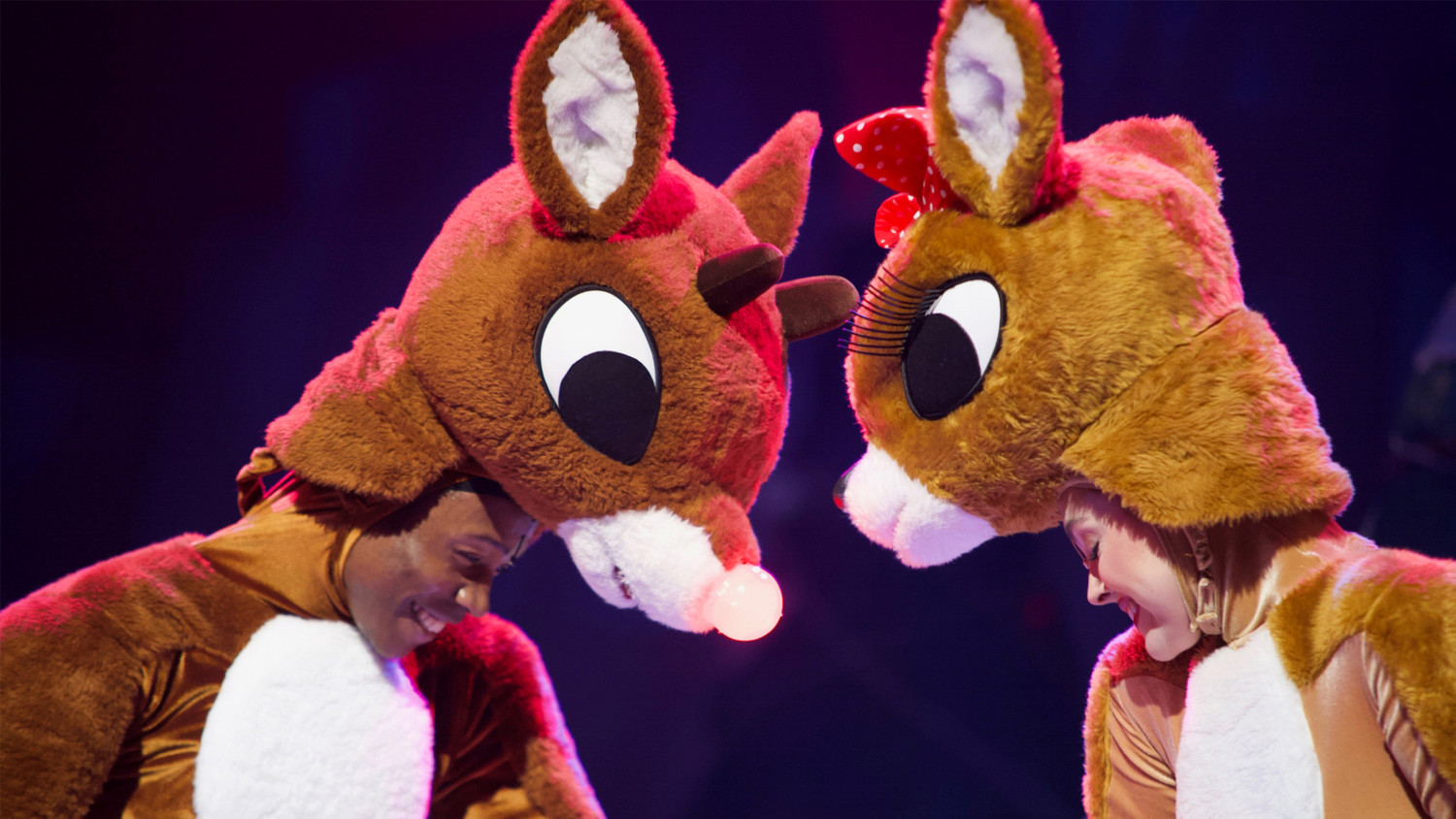Review: Duke Energy Center for the Performing Arts' Production of RUDOLPH THE RED-NOSED REINDEER Pays Homage to TV Classic and Delivers Timely Universal Message

You know Dasher and Dancer and Prancer and Vixen, Comet and Cupid and Donner and Blitzen. But how well do you really know Rudolph?
Sure, if you're like me, you remember watching the stop-motion animated special on television as a kid. And surely you've heard Gene Autry's version of the song time and time again. But seeing the animated musical version come to life onstage at The Duke Energy Center for the Performing Arts sheds a new light on this timeless tale about misfit toys, castaway elves, and a red-nosed outcast.
This production is based on the 1964 Arthur Rankin, Jr. and Jules Bass television special and was adapted for the stage by Robert Penola. Like the Rankin/Bass special, the show features a familiar score by Johnny Marks. 'The show first premiered at the First Stage children's theater in Milwaukee in 2012 and then went on a national tour. Two years later, it opened at The Duke Energy Center for the Performing Arts under the direction of Alan Coats, where it has played to family audiences during the holidays ever since.
T. Philip Caudle is reprising his role as the story's narrator, Sam the Snowman. He opens the show with a jolly rendition of Marks' 'A Holly Jolly Christmas' and effortlessly floats across the stage, unencumbered by his rigid, rotund costume, which is no small feat.
Melvin Gray, Jr. is reprising his role as the sprightly Rudolph and flies through the air with the greatest of ease to the delight of the kids in the audience. My four-year-old niece found Gray's Rudolph to be "cute," though his vocals were a bit too weak to do justice to some of the songs.
On the other hand, Grace Bell, who plays Rudolph's only reindeer friend Clarice has a magnificent voice and shines during her rendition of "There's Always Tomorrow."
Equally entertaining is Jock Brocki who plays Yukon Cornelius, a peppermint miner who helps Rudolph and friends escape Bumble The Abominable Snow Monster.
Performances aside, there are two factors that make this production of 'Rudolph' work. First, the stylized show has the same distinctive look and feel as the Rankin/Bass TV production thanks to some clever costumes, a pop art landscape set, and the use of puppets. In this staged version, all of the puppeteers are visible onstage, though most are donned in snowy white costumes. Even so, being able to see the puppeteers elevates the story and personifies the woodland creatures and misfit toys, which makes these characters all the more affecting and poignant.
Second, the underlying themes of bullying and acceptance are universal and timely. Rudolph is bullied for being different, Hermey the elf is dismissed for being a nonconformist (he dreams of being a dentist rather than a toymaker), and the misfit toys are rejected for being imperfect. Words matter and these storylines provide families with ample opportunity for reflection and conversation. In fact, parents may want to reference First Stage's Enrichment Guide for talking points and pre-show and post-show activities.
There are lots of compelling reasons and research to support why exposing children to the theater is a good idea, including the fact that the theater may improve academic performance, inspire creativity, and encourage empathy. And the story of RUDOLPH THE RED-NOSED REINDEER certainly does that, which makes this charming, family production not only a good, old-fashioned holiday show but also the perfect introduction to the performing arts for younger audiences.
RUDOLPH THE RED-NOSED REINDEER runs through December 24th at the Fletcher Opera Theater at the Duke Energy Center for the Performing Arts in Downtown Raleigh. For more information visit:
https://www.dukeenergycenterraleigh.com/events/rudolph-red-nosed-reindeer-musical.
Reader Reviews
Videos

